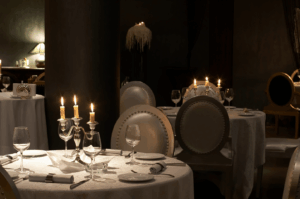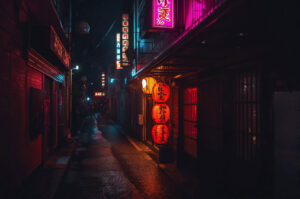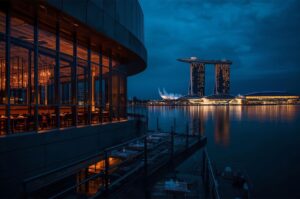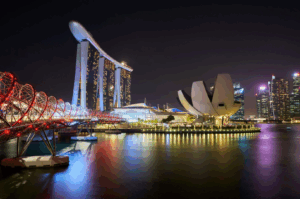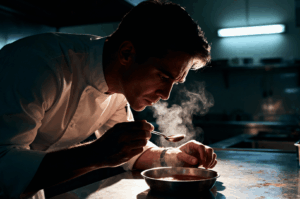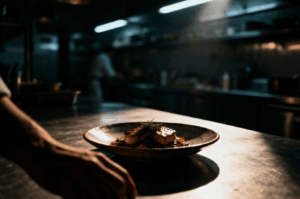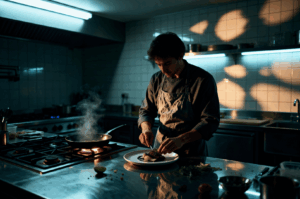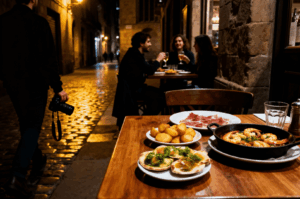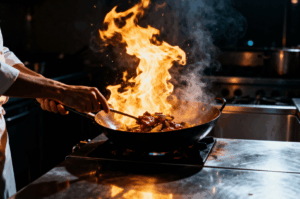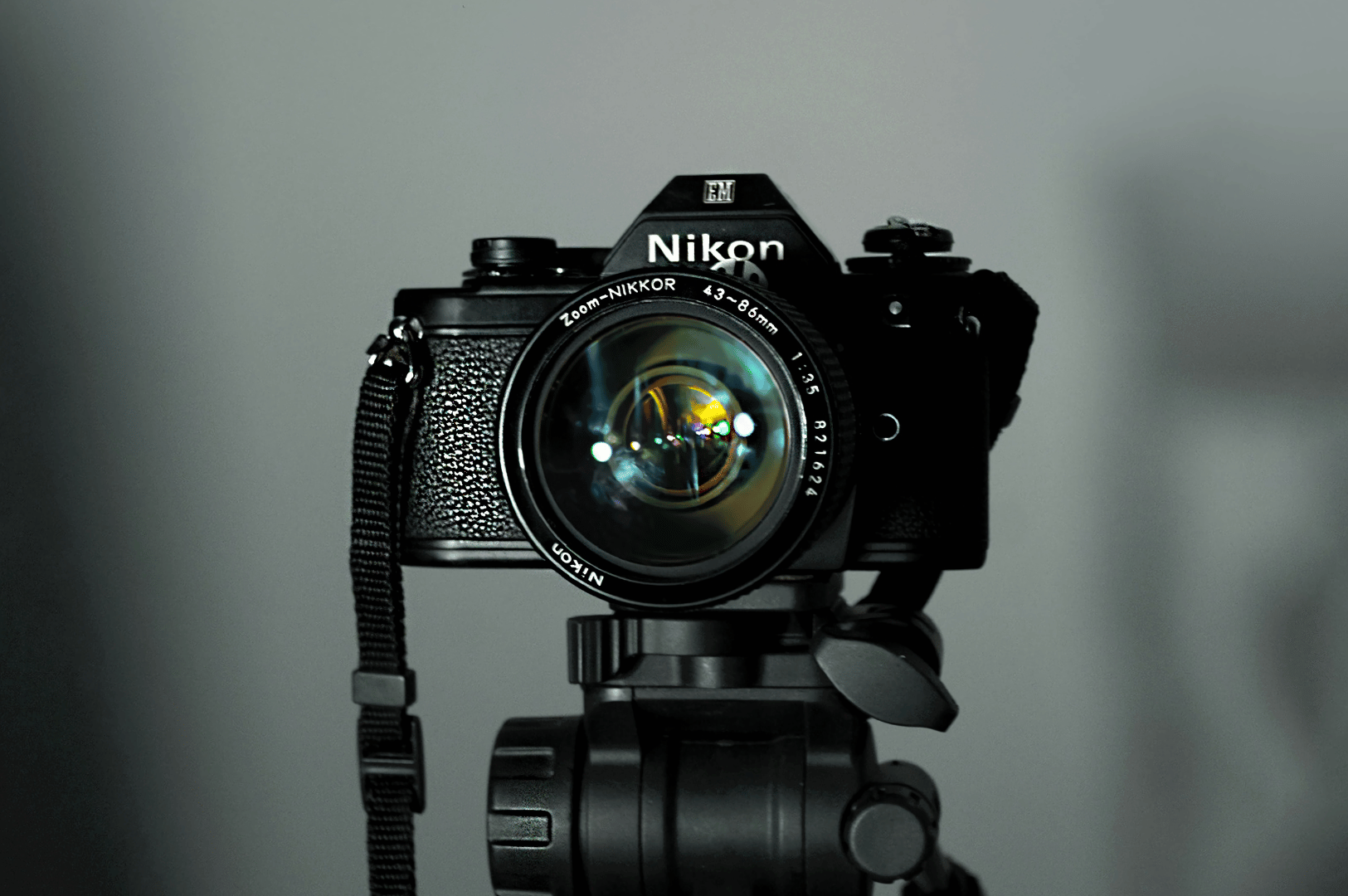
In the world of food photography, light is our most crucial ingredient. Just as a chef carefully selects spices to enhance a dish, photographers must master light to bring culinary creations to life. My journey as a midnight food photographer has taught me that different lighting conditions don't just change how we shoot—they transform what we see and how we tell stories through our images.
While my lens typically captures the mysterious dance of shadows in midnight culinary escapades, the daylight reveals an entirely different kind of beauty in Singapore's food scene. This article explores how nocturnal and daytime food photography complement each other, creating a complete toolkit for food photographers working in any condition.
The Dance of Light: Golden Hour vs. Midnight Magic
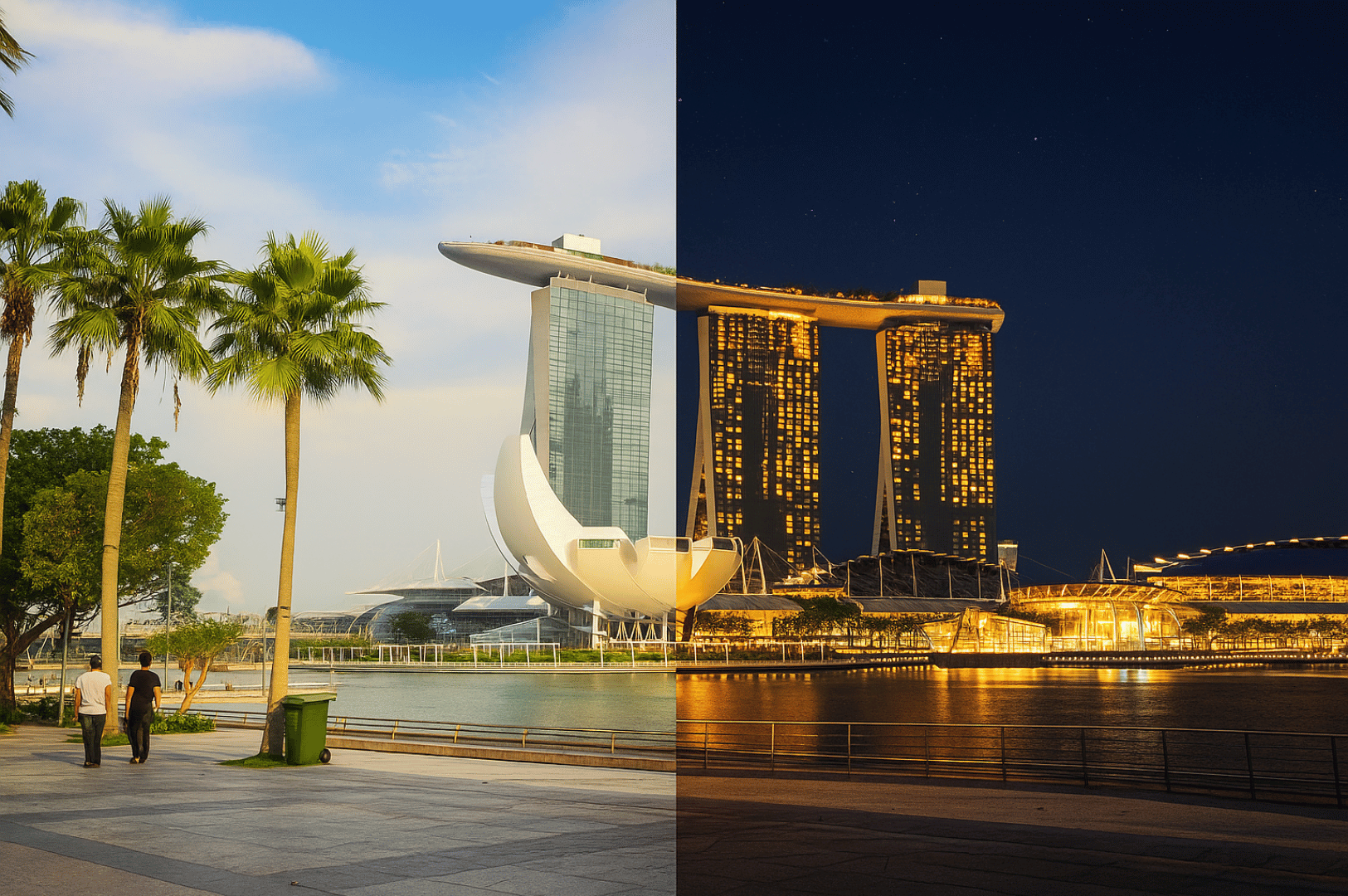
The golden hour—that magical time shortly after sunrise or before sunset—bathes food in warm, directional light that adds dimension and enhances natural colors. As explored in golden hour food photography tips, this natural light creates a "glossy glow" that makes dishes like laksa shimmer with appetizing vitality.
In contrast, midnight photography embraces the dramatic interplay between light and shadow. After dark, we aren't capturing reality as much as crafting it. The absence of natural light gives us complete control, allowing us to sculpt shadows that create mystery and intimacy around food. This controlled darkness can transform an ordinary hawker stall into a stage where culinary stories unfold in cinematic fashion.
The fundamental difference isn't just technical—it's philosophical. Golden hour photography celebrates the natural beauty of food, while midnight photography reveals its hidden character and secrets.
Equipment Essentials for All Light Conditions
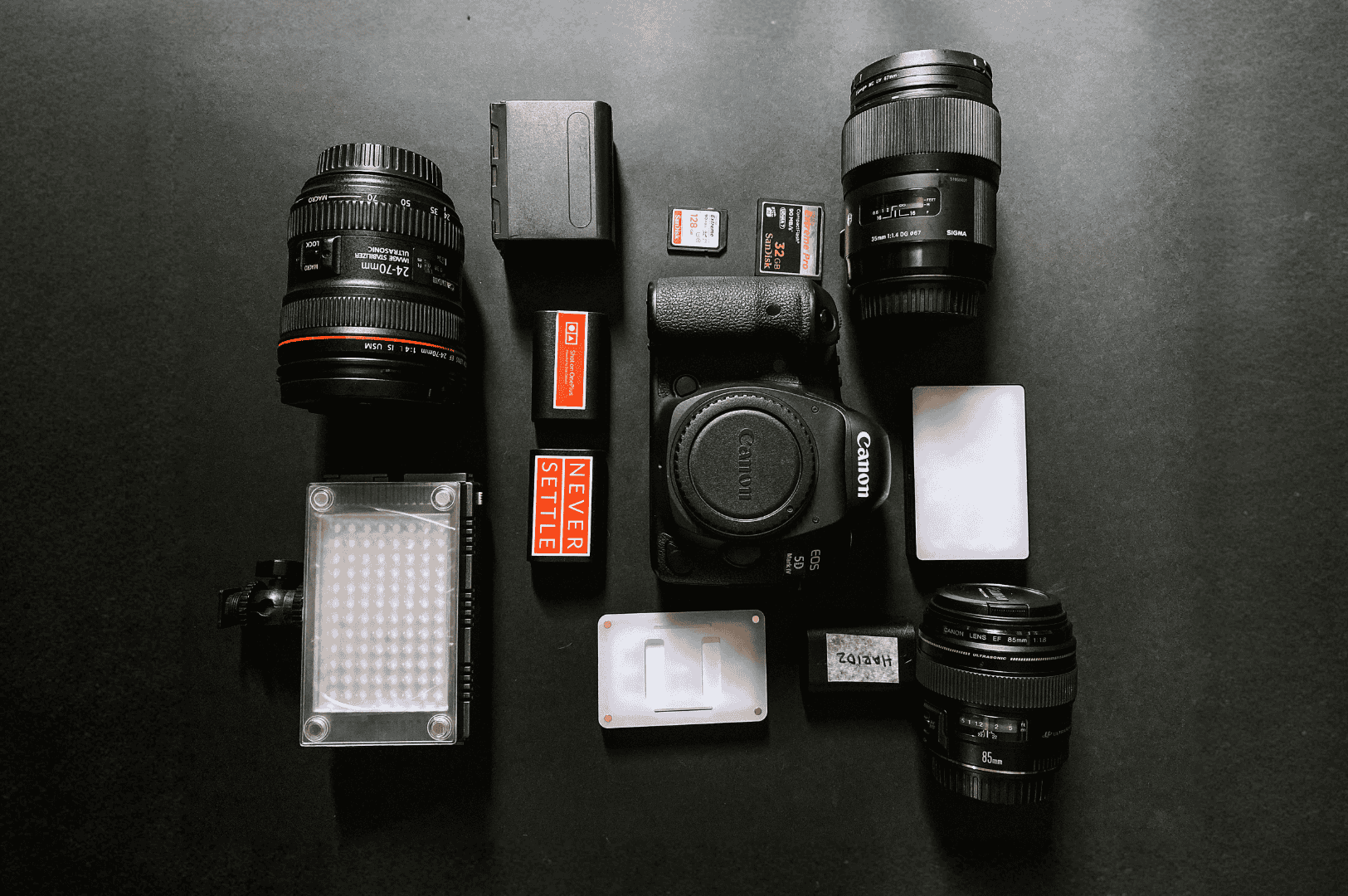
Successfully shooting in both worlds requires a versatile kit:
Daytime Essentials:
- A reflector or diffuser to manage natural light
- Portable bounce cards to fill shadows
- Tripod for stability in lower light conditions
- Circular polarizer to manage reflections on broth or sauces
Midnight Must-Haves:
- Small, portable LED panels with adjustable color temperature
- Light modifiers (softboxes, grids, barn doors)
- Black cards or flags to create negative fill
- Light stands with clamps for flexible positioning
The crossover item? A good tripod serves both worlds, enabling longer exposures during golden hour and providing stability for precise lighting setups at night.
Natural Light Mastery: Lessons from the Golden Hour
A natural light techniques focus on positioning and enhancement rather than creation. Key approaches include:
- Backlighting: Positioning food with light behind it creates a beautiful glow through translucent elements like broths and sauces, making laksa noodles appear to radiate light.
- Side lighting: This approach highlights texture in noodles, creating natural shadows that define the bowl's contours and depth.
- Diffusion: Using sheer curtains or diffusion panels to soften harsh sunlight, creating gentle gradients instead of harsh highlights.
The beauty of golden hour photography lies in its ability to reveal food's natural appeal with minimal intervention. As noted in this natural light food styling article, even settings like aperture (f/2.8 to f/5.6) are chosen to create a shallow depth of field that spotlights the "warmth and gloss" of dishes like laksa.
After Dark: Creating Atmosphere with Artificial Light
Midnight food photography requires a different mindset: rather than working with available light, we must build our lighting environment from scratch. My approach includes:
- Main and accent lights: Using a primary light source to establish direction, then adding smaller lights to highlight specific elements like steam or garnishes.
- Practical light sources: Incorporating existing environmental light (street lamps, kitchen fixtures, candles) to create authentic atmosphere while supplementing with controlled lighting.
- Light painting techniques: Using long exposures and moving light sources to selectively illuminate parts of a dish.
- Dramatic shadows: Intentionally creating deep shadows that conceal parts of the scene, inviting viewers to use their imagination.
While daytime food photography often seeks to eliminate shadows, midnight photography embraces them as storytelling elements. This approach transforms a simple bowl of laksa into a mysterious encounter, highlighting the clandestine nature of late-night dining. For more practical techniques, see My Guide to Mastering Low-Light Food Photography.
Composition Strategies Across Light Spectrums
Different lighting conditions suggest different compositional approaches:
Golden Hour Composition:
- Wider angles that incorporate the environment and context
- Emphasis on natural colors and textures
- Clean, bright negative space
- Arrangements that showcase ingredients distinctly
Midnight Composition:
- Tighter frames that create intimacy
- Selective focus drawing attention to specific elements
- Negative space used as shadow areas that frame the subject
- Compositions that suggest stories and secret encounters
The golden hour approach might showcase a laksa in its complete setting, while midnight photography might zoom in on steam rising from the bowl, captured against a dark background with just a hint of neon light providing color.
Post-Processing: Bridging Day and Night
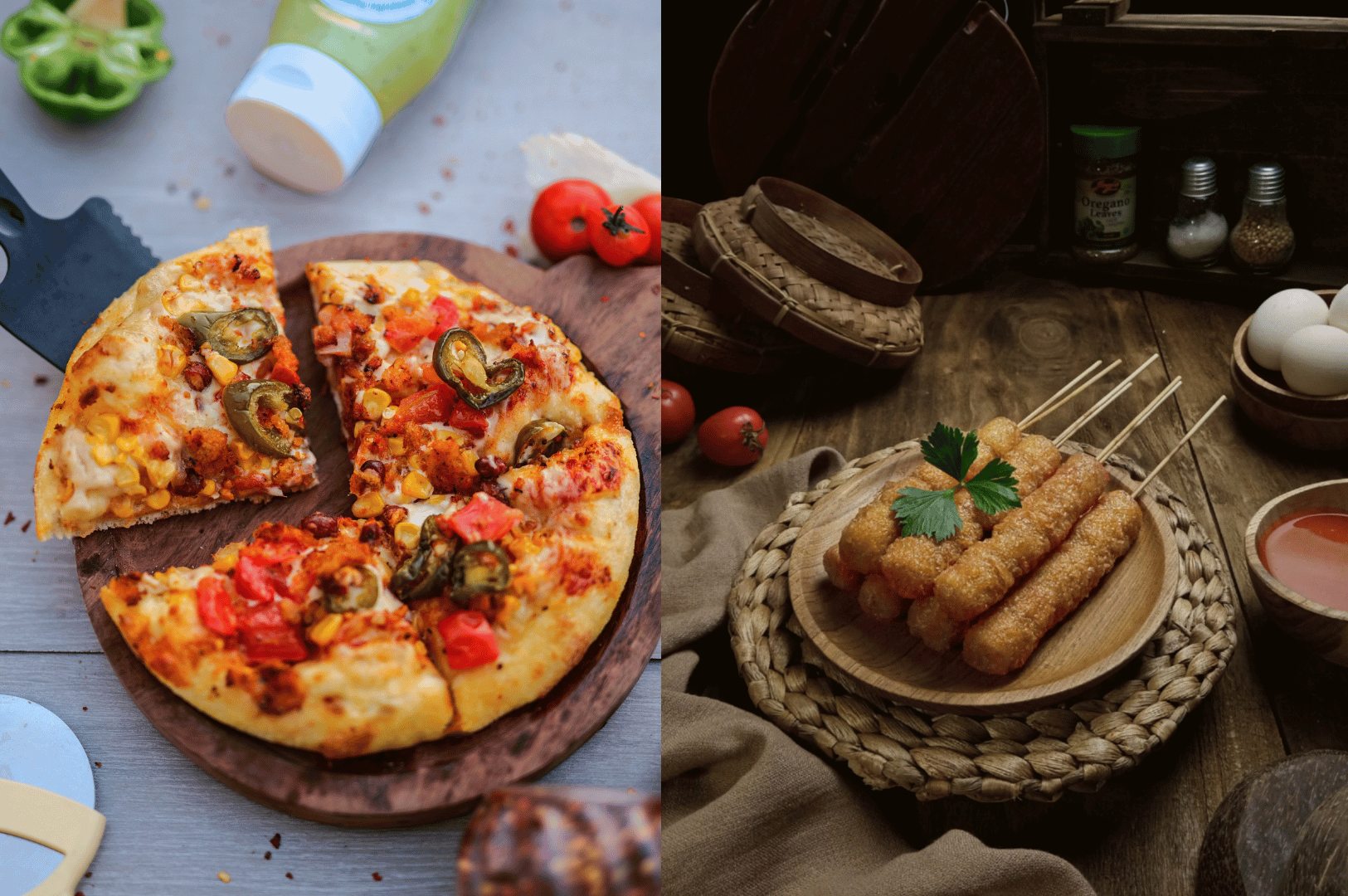
Editing strategies differ significantly between daylight and midnight photography:
Golden Hour Editing:
- Subtle enhancements to naturally occurring colors
- Careful balance of vibrance versus saturation
- Targeted clarity adjustments to enhance texture
- Preservation of natural color temperatures
Midnight Editing:
- Dramatic contrast adjustments
- Selective color grading to create mood
- Strategic noise reduction while preserving texture
- Creative use of vignetting to focus attention
While the golden hour food photography guide suggests using dodge and burn techniques to enhance specific highlights on noodles, midnight editing often requires more extensive shadow recovery and highlight management to balance the extreme contrasts inherent in artificial lighting.
Capturing Singapore Laksa Under Different Lights
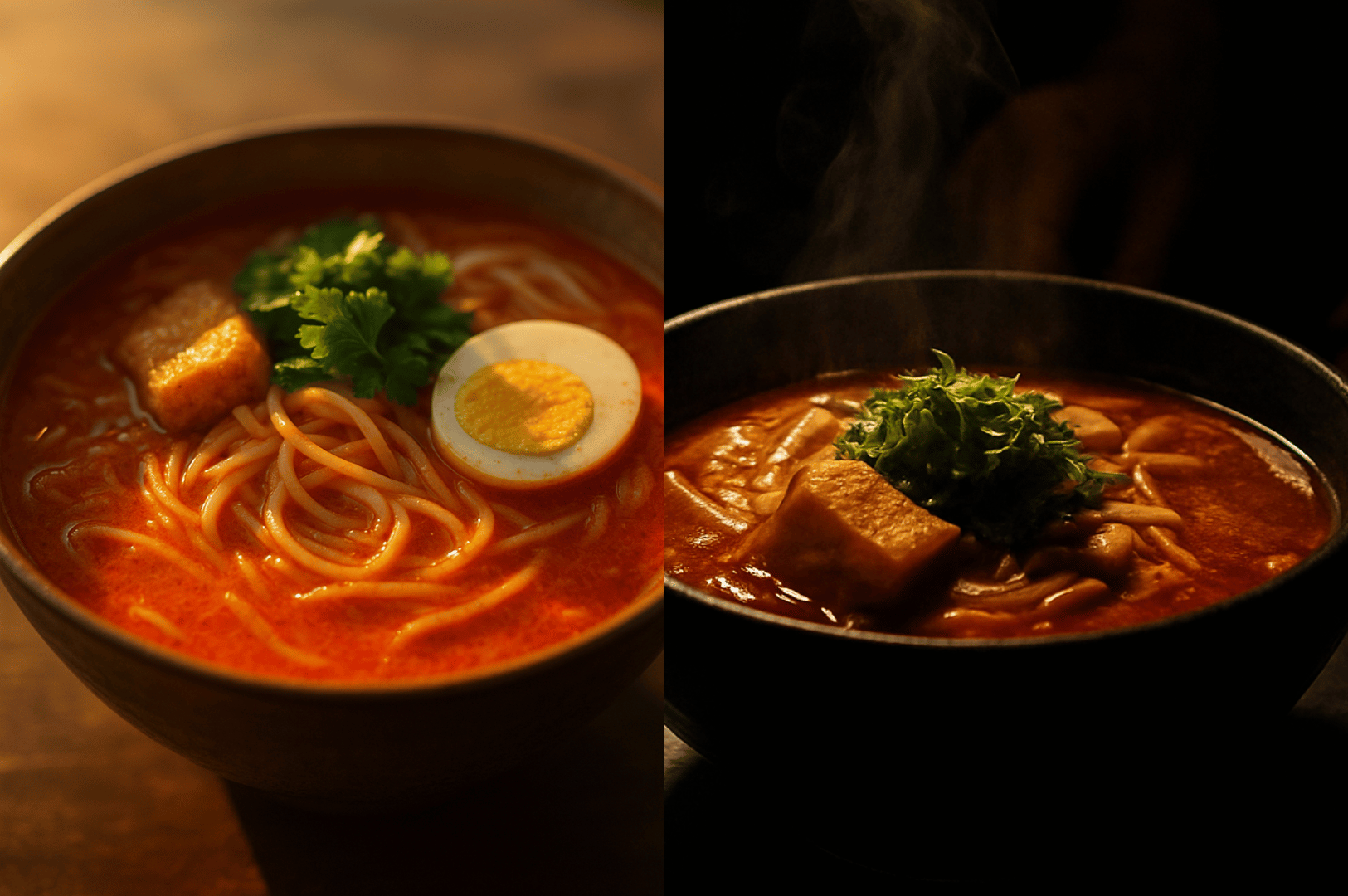
To illustrate these contrasting approaches, consider a bowl of Singapore laksa photographed in both conditions:
Golden Hour Laksa:
Shot near sunset, natural light flows through the spicy broth, creating a warm glow that highlights the red-orange colors. The noodles catch natural light, appearing glossy and inviting. Techniques like using a wide aperture create a shallow depth of field that spotlights the laksa while gently blurring the background.
Midnight Laksa:
Captured at a late-night hawker stall, a single controlled light source creates dramatic shadows across the bowl. Steam becomes more visible against the dark background, illuminated by a small accent light. The cook's hands might be partially visible in shadow, adding human context. The broth appears more mysterious, with just the surface catching light to reveal its rich color.
Both approaches tell different stories about the same dish—one celebrates its vibrant daytime appeal, while the other reveals its role in Singapore's nocturnal food culture.
Conclusion: Developing Your Complete Toolkit
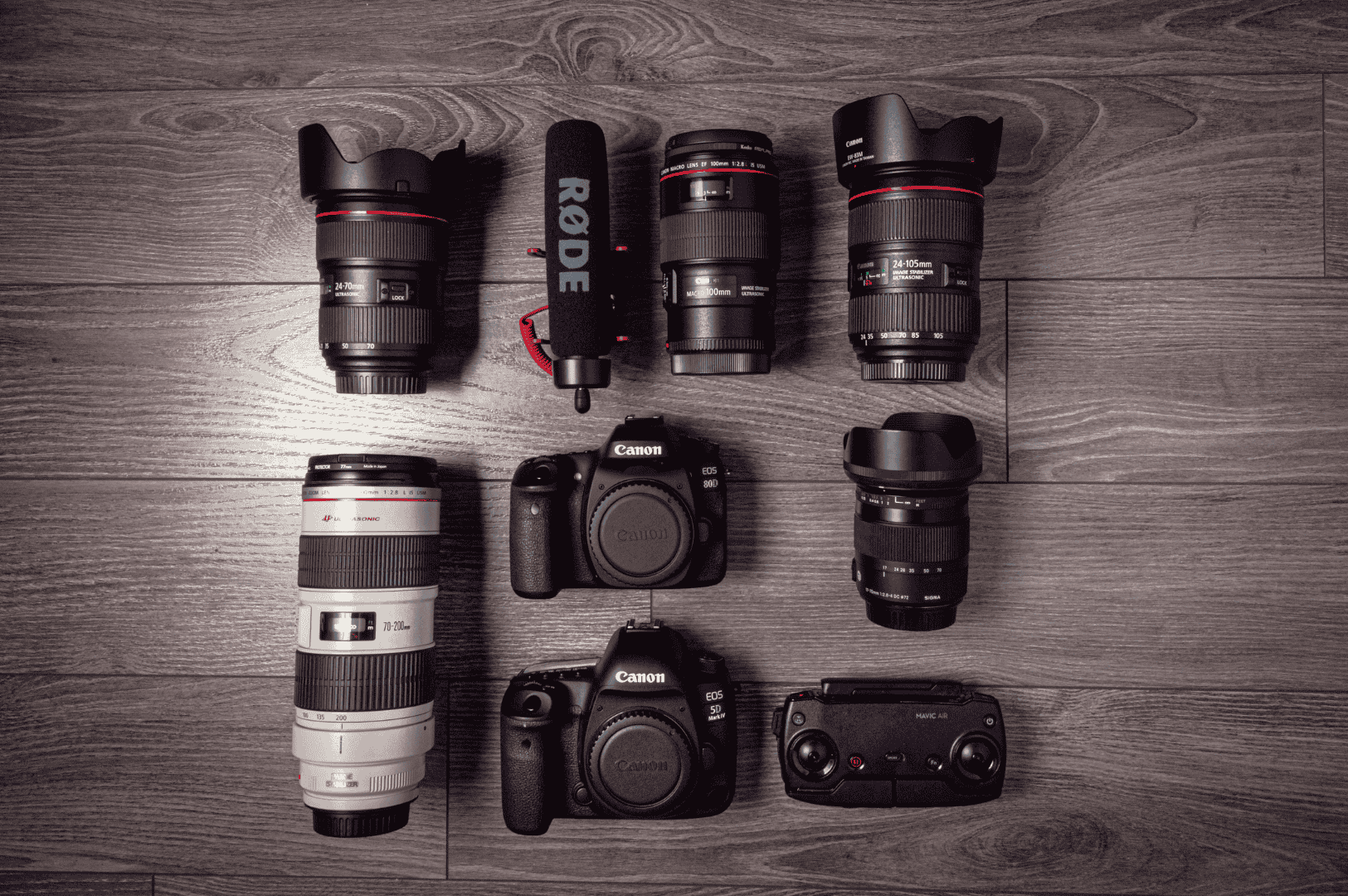
By mastering both natural light food styling techniques and artificial lighting approaches, food photographers develop versatility that serves them in any situation. Whether you're working with the golden light of dawn at a hawker center or the neon-kissed shadows of a midnight kitchen, understanding the principles of light allows you to adapt and create compelling food imagery.
The most complete food photographers don't choose between natural or artificial light—they learn to see the unique opportunities each presents and develop the technical skills to capture both worlds. As you practice, you'll find that techniques from each approach can cross-pollinate, creating a distinctive style that works across the full spectrum of lighting conditions.
Whether you're capturing the golden hour glow of a laksa's surface or the mysterious steam rising from a midnight bowl of noodles, remember that light is your storytelling medium—and the story of food unfolds across all 24 hours of the day.
For more inspiration and guides, visit Midnight Photographer.
Michelin Guide SG: The Complete Guide to Documenting Culinary Excellence and Cultural Memory
Sarah Teh | December 10, 2025
In Singapore’s michelin starred restaurants, moments of cultural memory unfold alongside fine dining. The michelin guide singapore is more than a ranking; it maps spaces where tradition, mastery, and aesthetics converge into experiences that exist briefly before becoming memory. Singapore stands out as a notable gastronomic destination in the Asia-Pacific region and the country’s culinary…
Tokyo Photography: A Guide to Izakaya and City Lights After Dark
Sarah Teh | December 10, 2025
The rain stops, but the streets of Shinjuku still gleam. Reflections of a thousand neon signs shimmer on the wet asphalt, painting the world in electric blue and vibrant pink. For a photographer, Tokyo at night is an endless playground. Nestled within this cinematic landscape, down a narrow alley and behind humble doorways, are the…
Night Photography Portfolio: Singapore’s Most Photogenic Fusion Restaurants
Sarah Teh | December 8, 2025
As the tropical sun dips below the horizon and the Lion City transforms into a glittering metropolis of neon and steel, savvy photographers know they’re about to witness the city at its most visually rich. Nowhere does this beauty come alive more than in Singapore’s growing scene of fusion restaurants, where each establishment is a…
Best Restaurant Singapore: A Complete Guide to the Lion City’s Top Dining Destinations
Sarah Teh | December 3, 2025
Singapore is a global food capital where hawker stalls and Michelin-starred restaurants coexist, reflecting the island’s rich multicultural heritage. The city offers a vibrant culinary scene, from traditional dishes steeped in history to innovative fine dining that pushes creative boundaries. Whether you’re a local or a traveler, this guide will help you discover the best…
Best Dining Experiences in Singapore: The Coolest Restaurants Right Now – Scene, Substance, and Stories Behind the Plates
Sarah Teh | November 26, 2025
What makes a restaurant truly cool in Singapore? It’s more than hype-it’s about story, substance, and scene coming together. Singapore stands out as one of the top cities for diverse and affordable dining experiences, thanks to its vibrant food scene and dynamic neighborhoods. The city’s coolest restaurants offer a unique dining experience where every detail-from…
The Art of Waiting: Chef Portraits Photography
Sarah Teh | November 19, 2025
The kitchen closes. The last server clocks out, and the dining room succumbs to a deep, restful silence. As a photographer who specializes in capturing culinary scenes after dark, I’ve learned that the most profound moments don’t happen during the frantic pace of service. They unfold in the quiet hours that follow, when a chef…
Shadow Play: Using Contrast for Dramatic Food Photography
Sarah Teh | November 12, 2025
Most food photographers chase the light. They seek bright, airy scenes with soft, even illumination to make food look fresh and appealing. But after the sun goes down, or on a dark and moody day, a different kind of magic emerges. I’ve learned to stop chasing bright light and start embracing the darkness. The secret…
Midnight Food Photography: The Secret Life of Restaurant Kitchens After Closing
Sarah Teh | November 5, 2025
The final customer has paid their bill and walked out into the night. The clatter of dishes fades, the front doors are locked, and a deep quiet settles over the restaurant. For most, this is the end of the day. For me, this is when the real work begins. My type of photography isn’t about…
Midnight Tapas: Barcelona’s Hidden Late-Hour Street Food Culinary Gems
Sarah Teh | October 29, 2025
The city of Barcelona breathes differently after midnight. The relentless energy of La Rambla softens to a murmur, and the ancient lanes of the Gothic Quarter trade crowds for shadows. This is when the true life of the city reveals itself, not in grand pronouncements, but in the clinking of a glass and the shared…
Flame Photography Techniques: Light Painting with Kitchen Flames – A Midnight Photographer’s Technical Guide
Sarah Teh | October 22, 2025
There is a raw, untamed energy in a kitchen at full tilt. For those of us who practice food photography, the most captivating element is often the most dangerous: fire. A burst of flame from a wok or the steady burn of candles on a dining table is more than just part of the cooking…
